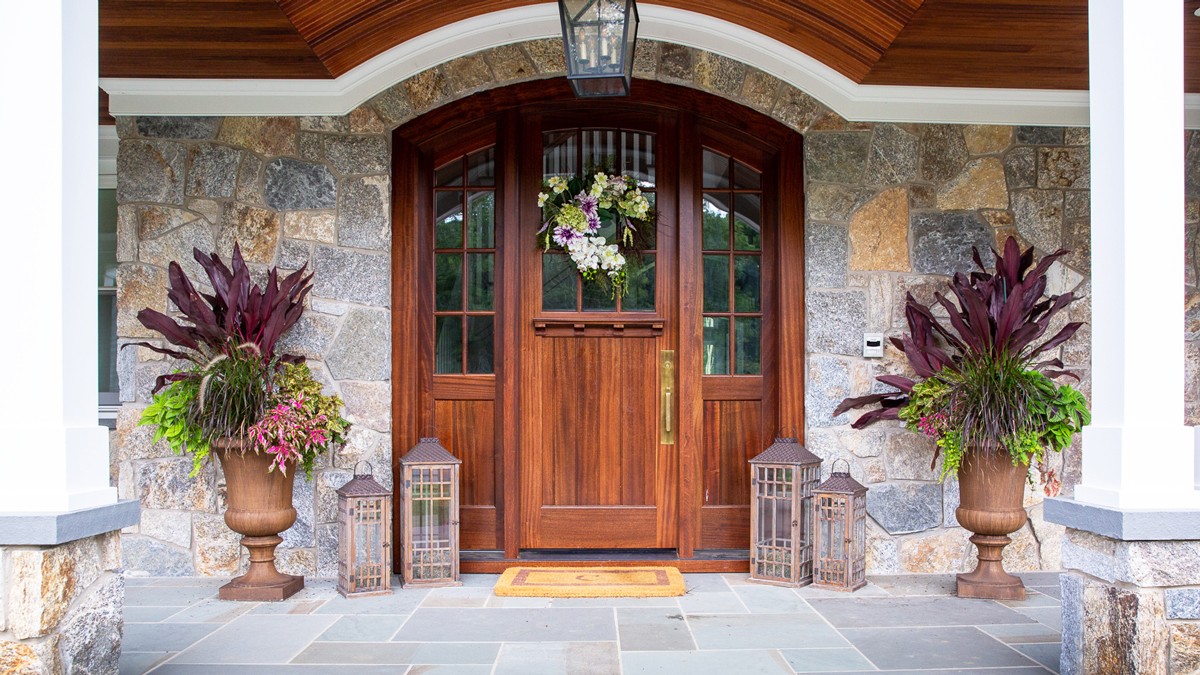
Historical House Doors: Restoring Vintage Charm in Modern Homes
In an era dominated by sleek minimalism and mass-produced furnishings, there’s something undeniably captivating about incorporating elements from the past into our living spaces. Historical house doors (haustüren), with their intricate carvings, solid wood construction, and timeless patina, offer a perfect way to infuse vintage charm into modern homes. Whether you’re renovating a century-old Victorian or adding character to a contemporary condo, restoring these doors can bridge the gap between eras, creating a home that’s both functional and full of personality. This article explores the art of restoring historical house doors, from assessment to integration, helping you preserve heritage while enhancing your home’s aesthetic appeal.
Restoring vintage doors isn’t just about nostalgia—it’s a practical choice too. These doors often boast superior materials like old-growth hardwood, which is denser and more durable than today’s options. Plus, with growing interest in sustainable living, repurposing antique doors reduces waste and adds unique value to your property. If you’re searching for ways to elevate your interior design, understanding how to restore historical house doors could be the key to unlocking that elusive blend of old-world elegance and modern convenience.
The Allure of Historical House Doors
What makes historical house doors(haustüren) so irresistible? For starters, they carry stories etched into their grains—tales of bygone eras, from the ornate panels of Art Deco entrances to the simple, sturdy slabs of Colonial farmhouses. Unlike generic doors from big-box stores, vintage ones feature handcrafted details like raised panels, brass hardware, and leaded glass inserts that modern replicas struggle to match.
The appeal lies in their authenticity. In a world of fast fashion and disposable decor, restoring vintage charm through these doors allows homeowners to stand out. Imagine swinging open a salvaged French door from the 1920s, its original hinges creaking softly, leading to a sunlit kitchen. It’s not just a doorway; it’s a portal to history.
From an SEO perspective, interest in “historical house doors” has surged as more people embrace eclectic interiors. Platforms like Pinterest and Houzz are flooded with inspiration boards showcasing restored doors in eclectic settings—think a weathered barn door repurposed as a sliding pantry entrance in a minimalist loft. This trend reflects a broader shift toward personalization, where vintage elements provide warmth and texture against cool, contemporary backdrops.
Moreover, these doors enhance property value. Real estate experts note that homes with preserved historical features, including restored doors, often sell faster and at higher prices. They’re conversation starters, evoking admiration from guests and a sense of pride for owners. But to truly harness this allure, one must start with proper restoration, ensuring the door’s integrity while adapting it for today’s lifestyles.
Assessing Your Vintage Door: Where to Begin
Before diving into restoration, a thorough assessment is crucial. Begin by identifying the door’s era and style—Victorian doors might have elaborate moldings, while mid-century ones favor clean lines and glass. Resources like architectural salvage yards or online databases can help pinpoint origins.
Inspect for structural issues: Check for warping, cracks, or rot, common in wood exposed to moisture over decades. Gently test hinges and locks; rusted hardware might need replacement, but originals add authenticity. Measure dimensions carefully—historical house doors often don’t fit standard modern frames, requiring adjustments.
Material matters too. Most vintage doors are solid wood, like oak or mahogany, but some feature veneers that could delaminate. Look for signs of previous repairs, such as mismatched paint layers or filler patches. If the door has glass, ensure panes are intact and free of cracks.
Safety is key: Older doors might contain lead paint, so test kits are essential before sanding. For those new to this, consulting a professional appraiser or restorer can provide insights. This step prevents costly mistakes and ensures your project respects the door’s heritage.
In modern homes, assessment also involves envisioning fit. Will this door complement your color scheme? Does it align with energy efficiency goals? Insulated vintage doors might need weatherstripping additions. By starting here, you’ll set the foundation for a successful restoration that marries vintage charm with practical modernity.
Essential Restoration Techniques for Historical Doors
Restoring historical house doors requires patience and the right techniques to revive their vintage charm without stripping away character. Start with surface preparation: Gently remove old paint or varnish using chemical strippers or heat guns, avoiding aggressive sanding that could damage wood grain.
For wood repairs, fill cracks with epoxy fillers matched to the original tone. If sections are rotted, splice in matching wood pieces—sourcing from salvage suppliers ensures authenticity. Sand progressively from coarse to fine grits for a smooth finish, then apply stains or paints that mimic historical palettes, like deep mahoganies or soft pastels.
Hardware restoration is equally vital. Soak brass knobs or hinges in vinegar to remove tarnish, or polish with fine steel wool. If parts are missing, antique markets offer replicas, but aim for period-accurate ones to maintain integrity.
Glass elements, common in French or panel doors, might need re-glazing. Use putty knives to remove old putty, clean frames, and install new glass with fresh glazing compound. For etched or stained glass, professional help prevents irreversible damage.
Throughout, use eco-friendly products—water-based finishes reduce VOCs, aligning with modern sustainability. Tools like orbital sanders and detail brushes make the process manageable for DIYers, but complex jobs benefit from workshops or tutorials on platforms like YouTube.
The goal? A door that looks aged yet refreshed, ready to enhance modern homes. With these techniques, you’ll transform a neglected relic into a focal point bursting with vintage allure.
Integrating Vintage Doors into Modern Interiors
Once restored, the real magic happens in integration. Historical house doors shine when blended thoughtfully with contemporary elements, creating harmonious spaces. For instance, install a salvaged pocket door in a open-plan living area to add fluidity without overwhelming the room.
Design tips abound: Pair ornate Victorian doors with sleek hardware for contrast, or use barn-style sliders from old farmhouses to divide minimalist kitchens. Lighting plays a role—spotlights can highlight carvings, making the door a sculptural element.
Color coordination is key. Stain the door to match modern furniture, or paint it a bold hue for pop against neutral walls. In small spaces, mirrored vintage doors reflect light, enhancing openness.
Functionality matters in modern homes. Add soft-close mechanisms to antique hinges for quiet operation, or incorporate smart locks while preserving exterior aesthetics. For exteriors, weatherproofed historical doors boost curb appeal, welcoming guests with timeless elegance.
Inspiration from designers like Joanna Gaines shows how restored doors elevate everyday spaces—think a Dutch door in a mudroom, combining charm with utility. This integration not only preserves history but also personalizes homes, making them feel lived-in and loved.
Common Challenges and Solutions in Door Restoration
Restoration isn’t without hurdles. Warping from humidity changes is frequent; counteract by storing doors flat in controlled environments before installation. If warping persists, steam bending or clamping with weights can straighten them.
Sourcing matching hardware poses another challenge. Online auctions like eBay or specialty sites offer solutions, but verify authenticity to avoid fakes. For rare pieces, custom fabrication from blacksmiths ensures fit.
Paint removal can reveal surprises like hidden damage. Always budget for contingencies—professional stripping services handle stubborn layers safely.
Energy efficiency is a modern concern; vintage doors lack insulation. Solutions include adding storm doors or internal foam panels without altering exteriors.
Pests or mold from storage? Treat with borate solutions, then seal thoroughly. Legal aspects, like historic preservation laws in some areas, require permits—check local regulations.
By anticipating these issues, you’ll navigate restoration smoothly, ensuring your historical house door thrives in a modern setting.
Maintenance Tips for Long-Lasting Vintage Charm
To keep restored doors looking pristine, regular maintenance is essential. Dust weekly with soft cloths, avoiding abrasive cleaners that dull finishes. Apply furniture wax quarterly for protection against scratches.
Monitor for environmental factors: Use humidifiers in dry winters to prevent cracking, and ensure proper ventilation to avoid moisture buildup.
Hardware needs lubrication—WD-40 on hinges prevents squeaks. For painted doors, touch up chips promptly to ward off peeling.
Seasonal checks are wise: Inspect seals before winter for drafts, and refinish every few years based on exposure.
Educate household members on gentle use— no slamming! This preserves both structure and charm.
With these habits, your historical house door will endure, continuing to enchant for generations.
Embracing the Past in Your Modern Sanctuary
Restoring historical house doors is more than a project—it’s a celebration of craftsmanship that enriches modern homes with vintage charm. From assessment to maintenance, each step honors the past while adapting to the present. Whether you’re a seasoned renovator or a curious homeowner, diving into this world promises rewarding results. Start scouting salvage yards or online listings today, and let these timeless portals transform your space into a storybook haven. Your home deserves that touch of history—why not open the door to it?







